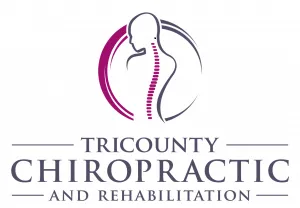What is the TMJ?
The temporomandibular joint (TMJ) is the hinge joint that connects the lower jaw (mandible) to the temporal bone of the skull, which is immediately in front of the ear on each side of your head. The joints are flexible, allowing the jaw to move smoothly up and down and side to side and enabling you to talk, chew, and yawn. Muscles attached to and surrounding the jaw joint control the position and movement of the jaw.
What are the symptoms of TMJ Dysfunction?
People with TMJ dysfunction can experience severe pain and discomfort that can be temporary or last for many years. More women than men experience TMJ dysfunction, and it is seen most commonly in people between the ages of 20 and 40.
Common symptoms of TMJ dysfunction include:
- Pain or tenderness in the face, jaw joint area, neck and shoulders, and in or around the ear when you chew, speak, or open your mouth wide
- Limited ability to open the mouth very wide
- Jaws that get "stuck" or "lock" in the open- or closed-mouth position
- Clicking, popping, or grating sounds in the jaw joint when opening or closing the mouth (which may or may not be accompanied by pain) or chewing
- A tired feeling in the face
- Difficulty chewing or a sudden uncomfortable bite -- as if the upper and lower teeth are not fitting together properly
- Swelling on the side of the face
- May occur on one or both sides of the face
Other common symptoms of TMD include toothaches, headaches, neck aches, dizziness, earaches, hearing problems, upper shoulder pain, and ringing in the ears (tinnitis).
How Can Chiropractic Care Help?
Chiropractic care for the your TMJ joint can ease pain by correcting the misalignment between your spine and nervous system. Chiropractic can be effective at reducing your pain associated with your TMJ, either when used alone or as a complement to other treatments. This is because, rather than changing your diet or modifying your teeth; it relaxes your muscles, adjusts your joints and uses specific trigger points to accurately re-position your jaw. When done successfully, this will not only relieve your pain in the short run, but it can help prevent your TMJ pain from returning. Chiropractic treatment of the TMJ joint focuses on relieving tension in the muscles around the joints themselves, using trigger point therapy. (A trigger point is a very sensitive area made of muscle fibers. Trigger points feel like knots and may cause pain or even a twitching response when pressure is applied to them.) In some cases, misalignment of the jaw that results from improper posture or a back problem can cause your TMJ joint disorder. An approach to treating TMJ caused by misalignment in your neck and upper back is to perform chiropractic adjustments on your spinal joints in these areas. In addition, trigger point therapy is used to relieve tight muscles in the back around your spine. This reduces the amount of stress put on your jaw so that other treatments to adjust your jaw will be more effective.
Call us today to schedule an evaluation 484.879.6968
